Geography education for kids plays a pivotal role in shaping their understanding of the world around them. It goes beyond memorizing maps and capitals; it fosters a sense of global awareness and cultural appreciation from an early age. In this brief overview, we explore the significance of geography games for children and delve into the transformative role that games play in making learning not only informative but also engaging for young minds. Through interactive and enjoyable experiences, games become powerful tools in cultivating a lifelong curiosity about our planet and its diverse landscapes.
Table of contents
Why Geography Games?

Benefits of Learning Geography Through Games
Geography is a subject that goes beyond memorizing maps and capital cities; it is a dynamic field that encompasses spatial relationships, cultural diversity, and critical thinking. Traditional methods of teaching geography may sometimes fall short in engaging students effectively. However, incorporating games into the learning process can make a significant difference. In this blog, we will explore the benefits of learning geography through games.
Enhances Spatial Awareness
Geography is fundamentally about understanding space and the relationships between different locations. Games provide an interactive and immersive platform for students to explore maps, navigate terrains, and develop a keen sense of spatial awareness. Whether it’s a virtual globe-trotting adventure or a board game that requires players to plan routes, these activities help students visualize the world and grasp the significance of geographic locations.
Spatial awareness is a crucial skill in various fields, from urban planning to logistics and even everyday tasks. By incorporating games into geography lessons, educators can enhance students’ spatial thinking abilities, helping them become more adept at interpreting and understanding the spatial dimensions of our world.
Encourages Critical Thinking
Geography involves more than just identifying countries on a map; it requires critical thinking skills to analyze and interpret data, patterns, and relationships. Games designed around geography often present challenges that demand strategic thinking, problem-solving, and decision-making.
For instance, geography-based strategy games may require players to consider factors such as climate, topography, and available resources when making decisions. By engaging in these activities, students not only reinforce their geographical knowledge but also sharpen their critical thinking abilities. These skills are transferable and can be applied in various academic subjects and real-world scenarios.
Promotes Cultural Understanding
One of the most exciting aspects of geography is exploring diverse cultures and understanding the ways in which they interact with their environments. Geography games can play a pivotal role in fostering cultural understanding by immersing students in the customs, traditions, and landscapes of different regions.
Whether through virtual simulations or board games that incorporate cultural elements, students gain insights into the richness and diversity of the world. This firsthand experience helps break down stereotypes and fosters an appreciation for the interconnectedness of global cultures. By promoting cultural understanding, geography games contribute to the development of well-rounded individuals with a global perspective.
Captivating Geography Games for Kids
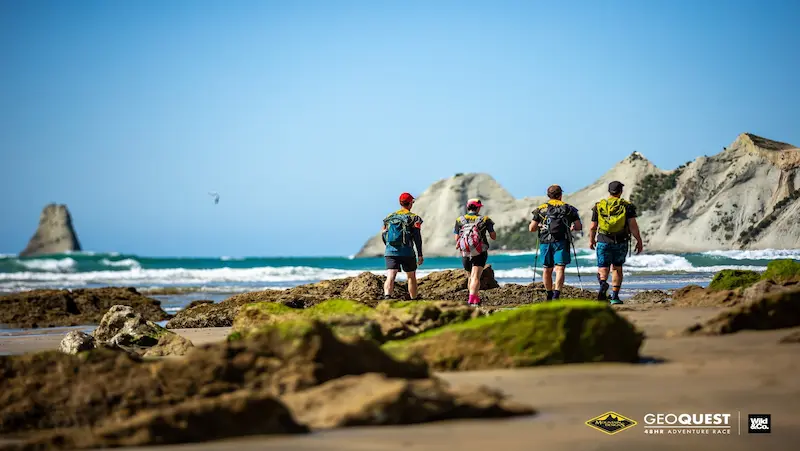
Game 1: GeoQuest: World Explorer
Geography is a subject that often gets overlooked, but it’s a crucial part of understanding the world around us. To make learning geography fun and engaging for kids, educators and parents alike have turned to captivating geography games. These games not only entertain but also educate, making the process of learning about countries, landmarks, and cultures an enjoyable adventure.
Overview of the Game:
One exemplary geography game that stands out is “GeoQuest: World Explorer.” In this game, players embark on a virtual journey around the globe, solving puzzles, answering questions, and unlocking fascinating facts about different countries. The game is designed to be both entertaining and educational, seamlessly integrating knowledge acquisition with interactive gameplay.
Educational Objectives:
GeoQuest: World Explorer is crafted with several educational objectives in mind. Firstly, it aims to enhance geographical knowledge by introducing players to the diverse landscapes, cultures, and landmarks found across the globe. Additionally, the game fosters critical thinking skills as players navigate challenges and solve puzzles related to geography. Through interactive quizzes and tasks, kids absorb information about continents, countries, capitals, and geographical features, reinforcing their understanding in an engaging manner.
How to Play:
GeoQuest: World Explorer is easy to play and accessible for a wide range of age groups. Players start by selecting their virtual avatar and setting out on a journey to different continents. Each continent presents a series of challenges, including identifying countries on a map, recognizing flags, and answering trivia questions. Points are earned for each correct answer, motivating players to strive for high scores.
To progress in the game, players must unlock new levels by completing tasks and challenges. The interactive nature of the game ensures that kids are not merely memorizing facts but actively engaging with the material, making the learning experience more impactful.
Why Kids Love It:
GeoQuest: World Explorer has garnered popularity among kids for several reasons. Firstly, the game’s vibrant and visually appealing graphics capture the attention of young players, creating an immersive experience. The interactive nature of the challenges and quizzes keeps kids actively involved, fostering a sense of excitement and accomplishment as they progress.
Furthermore, the game’s competitive element, with scores and levels to conquer, motivates kids to continue exploring and learning. As they unlock new continents and discover interesting facts, a sense of curiosity is ignited, encouraging a genuine interest in geography.
Game 2: Stack the Countries
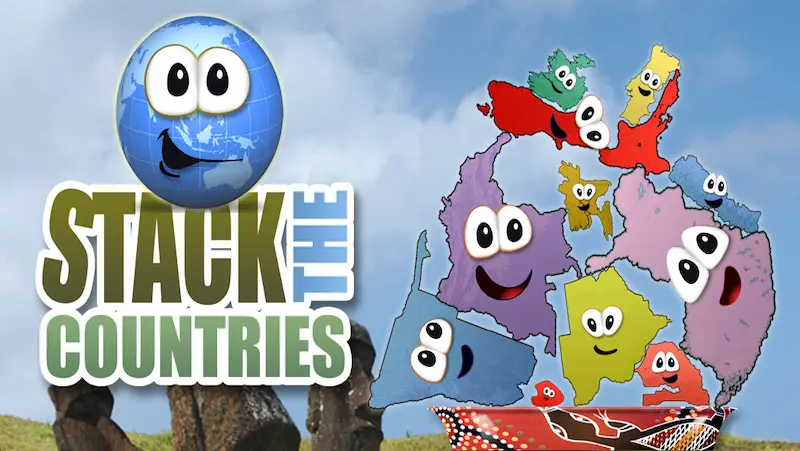
Overview of the Game:
In a world where technology has become an integral part of education, finding engaging and educational games for children can be a challenge. “Stack the Countries” is a captivating and educational game that offers a unique blend of fun and learning. Developed by Dan Russell-Pinson, this game takes players on a journey around the globe, making geography an exciting adventure.
The premise of the game is simple yet intriguing. Players are tasked with stacking animated country-shaped blocks on top of each other, trying to reach a specific height. As they progress, they unlock new countries, learn interesting facts, and develop a deeper understanding of the world’s geography.
Educational Objectives
“Stack the Countries” is not just a game; it’s an educational tool designed to make learning geography enjoyable. The game aims to achieve several educational objectives:
a. Geography Awareness: The primary goal is to familiarize players with the shapes, names, and locations of different countries. Through interactive gameplay, players gain a visual understanding of the world map.
b. Country Capitals and Flags: In addition to recognizing countries, players learn about capital cities and national flags. This aspect of the game enhances their knowledge of global diversity and cultural differences.
c. Strategic Thinking: To successfully stack the countries, players must think strategically. This element of the game promotes critical thinking skills and spatial awareness as they plan their moves to avoid toppling their country towers.
d. Retention of Information: By incorporating quizzes and challenges, the game reinforces the information learned during gameplay. This repetition aids in the retention of facts about countries and their characteristics.
3. How to Play
The gameplay is intuitive and suitable for various age groups. Players start with a blank canvas and are presented with a stack of animated country blocks. To earn more countries, players must answer trivia questions correctly or complete challenges related to the countries they’ve stacked. The challenges range from identifying country capitals to recognizing flags.
As players progress, they face increasing levels of difficulty, requiring them to carefully balance and strategize to avoid toppling their stacks. The game’s progression system ensures that players continuously build on their knowledge and skills.
4. Why Kids Love It
“Stack the Countries” has gained popularity among kids for several reasons:
a. Engaging Gameplay: The interactive and colorful design of the game captures the attention of young players, making learning feel like a fun adventure.
b. Collectible Aspect: Unlocking new countries creates a sense of accomplishment and encourages players to explore more regions. The collectible aspect motivates them to keep playing and discovering.
c. Quizzes and Challenges: The game cleverly integrates quizzes and challenges, turning learning into a dynamic and entertaining experience. Children enjoy the sense of achievement when they successfully answer questions and progress in the game.
d. User-Friendly Interface: The game’s user-friendly interface allows kids to navigate effortlessly, making it accessible to a wide age range. The simplicity of controls ensures that the focus remains on learning and enjoyment.
Game 3: World Map Puzzle Games
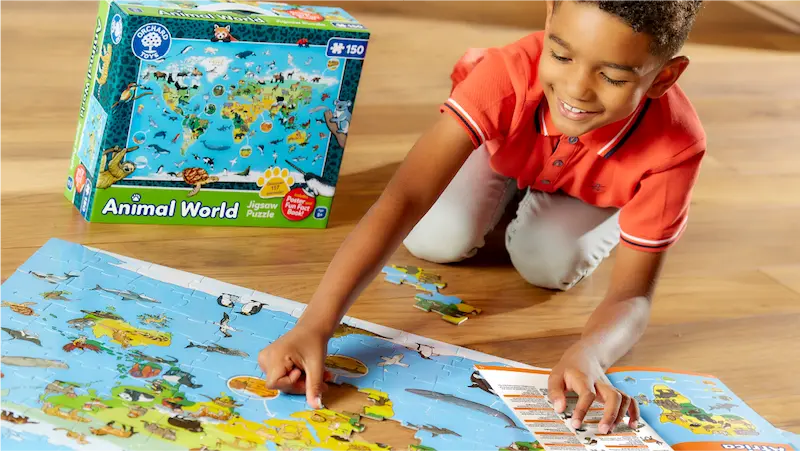
In the ever-evolving landscape of educational games, world map puzzle games have emerged as a captivating and informative tool for both children and adults alike. These games not only offer entertainment but also provide a unique way to explore the world, fostering geographical awareness and cognitive skills. In this blog, we will delve into the captivating universe of world map puzzle games, exploring their overview, educational objectives, gameplay mechanics, and the reasons behind their popularity among kids.
Overview of the Game:
World map puzzle games transport players to a virtual globe, challenging them to piece together countries, continents, and landmarks. The puzzles often come in various difficulty levels, allowing players to progress from basic geography to more complex global knowledge. These games leverage technology to make learning about the world a visually engaging experience, with vibrant graphics and interactive features.
Educational Objectives:
The primary educational objectives of world map puzzle games are to enhance geographical knowledge, improve spatial awareness, and boost cognitive skills. As players navigate through continents and countries, they develop a deeper understanding of the world’s geography, learning about diverse cultures, landmarks, and geographical features.
Furthermore, these games promote critical thinking and problem-solving skills. As players manipulate puzzle pieces, they must analyze spatial relationships and make informed decisions to complete the map. This process stimulates cognitive development and encourages strategic thinking.
In addition to geographical knowledge, world map puzzle games often incorporate historical and cultural information, providing players with a holistic learning experience. By combining education with entertainment, these games make the process of acquiring knowledge enjoyable and memorable.
How to Play:
Playing world map puzzle games is a straightforward yet stimulating experience. Players are presented with a virtual map, initially fragmented into pieces. The objective is to correctly place each piece to reconstruct the complete map. Depending on the game’s complexity, players may need to identify and place countries, continents, capitals, or specific landmarks.
To make the gameplay more engaging, some puzzles include time limits or scoring systems. This adds an element of competition, motivating players to improve their skills and beat their previous scores.
Why Kids Love It:
World map puzzle games have gained immense popularity among kids for several reasons. Firstly, the vibrant and interactive visuals capture their attention, transforming the learning process into an exciting adventure. The gamified elements, such as scoring systems and achievements, create a sense of accomplishment, boosting children’s confidence as they progress through different levels.
Tips for Introducing Geography Games at Home or in the Classroom
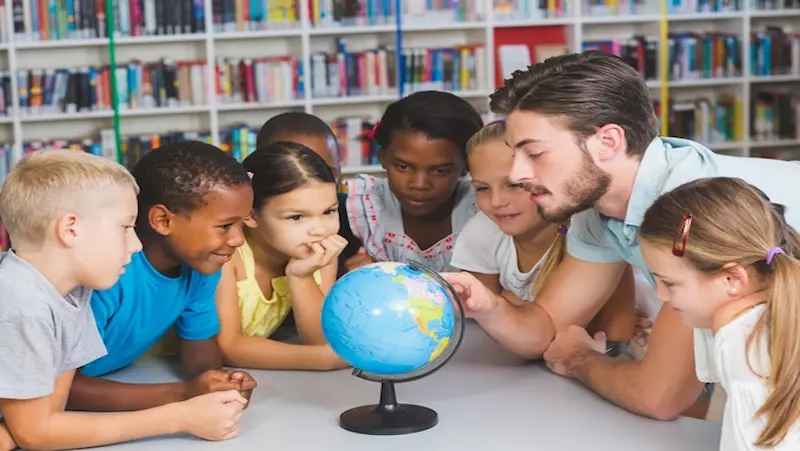
Geography is a subject that often gets overlooked, but it’s a vital component of understanding the world around us. Introducing geography games can make learning about countries, cultures, and landscapes a thrilling and engaging experience. Whether you’re a teacher looking to spice up your lesson plans or a parent wanting to make learning fun at home, here are some tips to create a captivating geography learning experience.
Creating a Fun Learning Environment:
1. Interactive Maps and Globes: Utilize physical maps and globes to give learners a tangible sense of geography. Encourage exploration by letting them touch, spin, and interact with these tools.
2. Virtual Adventures: Explore online resources that offer virtual tours of different places around the world. Platforms like Google Earth provide a fascinating way to virtually travel, enabling students to experience geography firsthand.
3. Geography-Themed Decor: Foster an immersive learning environment by incorporating geography-themed decorations in the classroom or at home. Maps, flags, and cultural artifacts can create a visually stimulating atmosphere.
4. Geography Bee: Organize a friendly geography bee competition. This can be done both at home and in the classroom. It encourages healthy competition and motivates learners to expand their geographical knowledge.
Incorporating Games into Lesson Plans:
1. Geography Trivia: Turn traditional trivia into an exciting geography game. Create question cards about countries, capitals, and landmarks, challenging students to answer quickly and accurately.
2. Geocaching: Combine technology and geography by incorporating geocaching into lessons. Geocaching is a real-world, outdoor treasure hunting game using GPS-enabled devices. It encourages teamwork, problem-solving, and navigation skills.
3. Board Games and Puzzles: Integrate geography into classic board games or puzzles. Games like Risk or Ticket to Ride can be adapted to focus on geography, making learning a collaborative and enjoyable experience.
4. Simulations and Role-Playing: Create simulations or role-playing activities where students take on the roles of explorers, diplomats, or even cartographers. This hands-on approach can make complex geographical concepts more relatable.
Customizing Games for Different Age Groups:
1. Colorful and Interactive Materials for Younger Children: For younger children, use colorful maps, flashcards, and interactive apps to introduce basic concepts like continents and oceans. Make learning playful with songs and rhymes.
2. Challenging and In-Depth Activities for Older Students: Tailor games and activities to suit the interests and abilities of older students. Explore geopolitical issues, current events, and historical connections to enhance their understanding of global affairs.
3. Adaptable Complexity Levels: Ensure that games can be adjusted for different skill levels. This allows for inclusivity in the classroom or family setting, ensuring that everyone is appropriately challenged.
4. Group Projects and Collaborative Challenges: Foster teamwork and collaboration by assigning group projects related to geography. Encourage students to create their own games, quizzes, or presentations, promoting a sense of ownership over their learning.
Conclusion
In conclusion, geography education plays a pivotal role in fostering a global perspective and understanding of our interconnected world. It serves as a foundation for informed citizenship and critical thinking. As we emphasize the significance of geography in shaping well-rounded individuals, it becomes essential for parents and educators to consider innovative approaches, such as integrating educational games, to make learning more engaging and effective. By sparking a love for exploration from an early age, we empower the next generation with the tools to navigate and contribute meaningfully to an ever-evolving global landscape.
To get your hands on more such articles, educational content, and free resources on coding classes for kids, online robotics classes for kids, game development, etc., check out the BrightCHAMPS Page now!
Frequently Asked Questions
A1. The games are tailored for kids aged 5-12, providing engaging learning experiences for various age levels within that range.
A2. Absolutely! They combine fun and learning, offering an interactive way for kids to explore countries, flags, landmarks, and more, fostering a better understanding of the world.
A3. These games promote geographical knowledge, critical thinking, and problem-solving skills in an enjoyable, interactive setting, making learning about the world exciting.
A4. Some games might need an internet connection for features like updates or multiplayer options, but there are offline options available as well.
A5. Many games offer free versions with limited features, while full versions may require a purchase. However, there are often affordable or free options available.

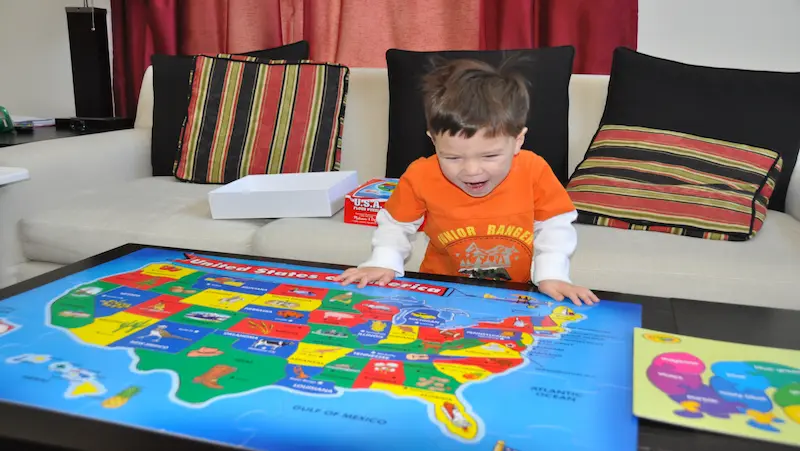
 We are an army of educators and passionate learners from BrightChamps family, committed to providing free learning resources to kids, parents & students.
We are an army of educators and passionate learners from BrightChamps family, committed to providing free learning resources to kids, parents & students.














